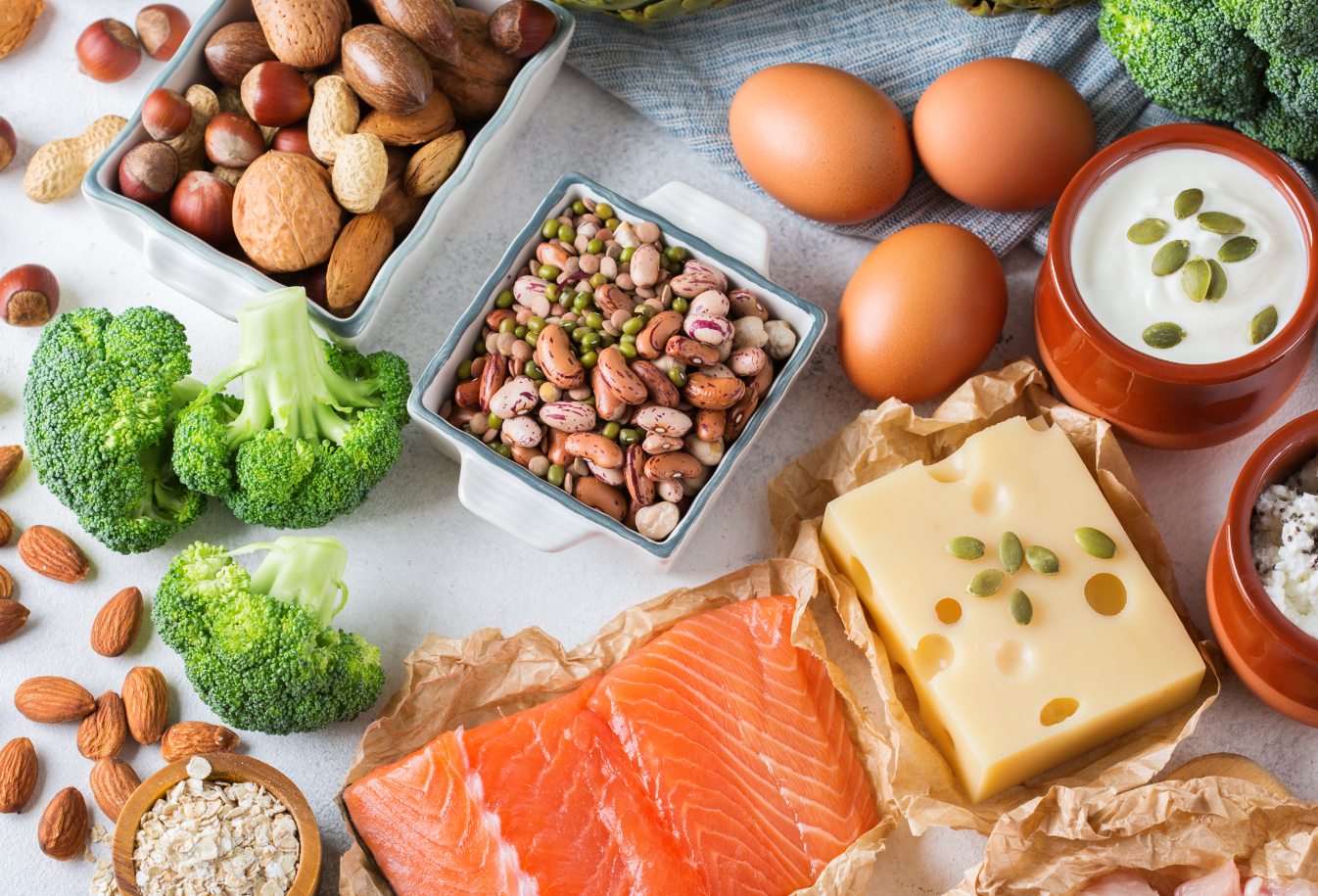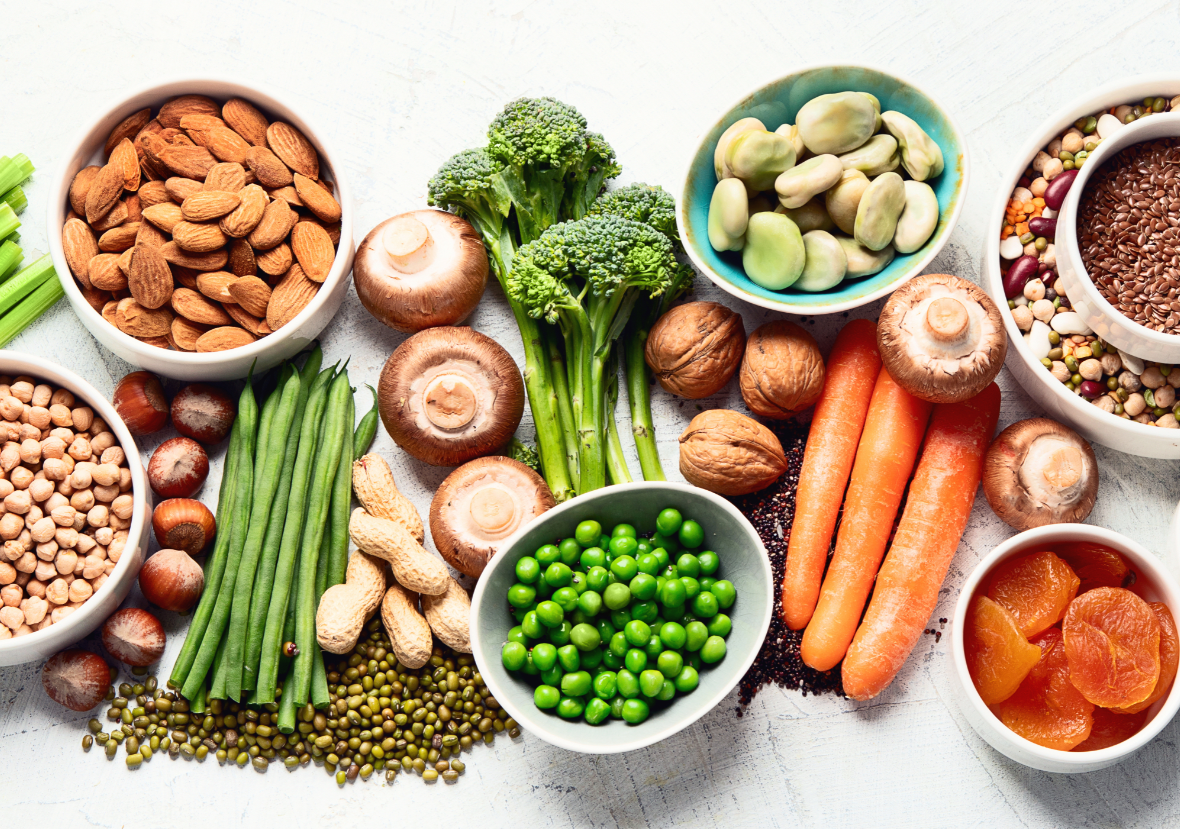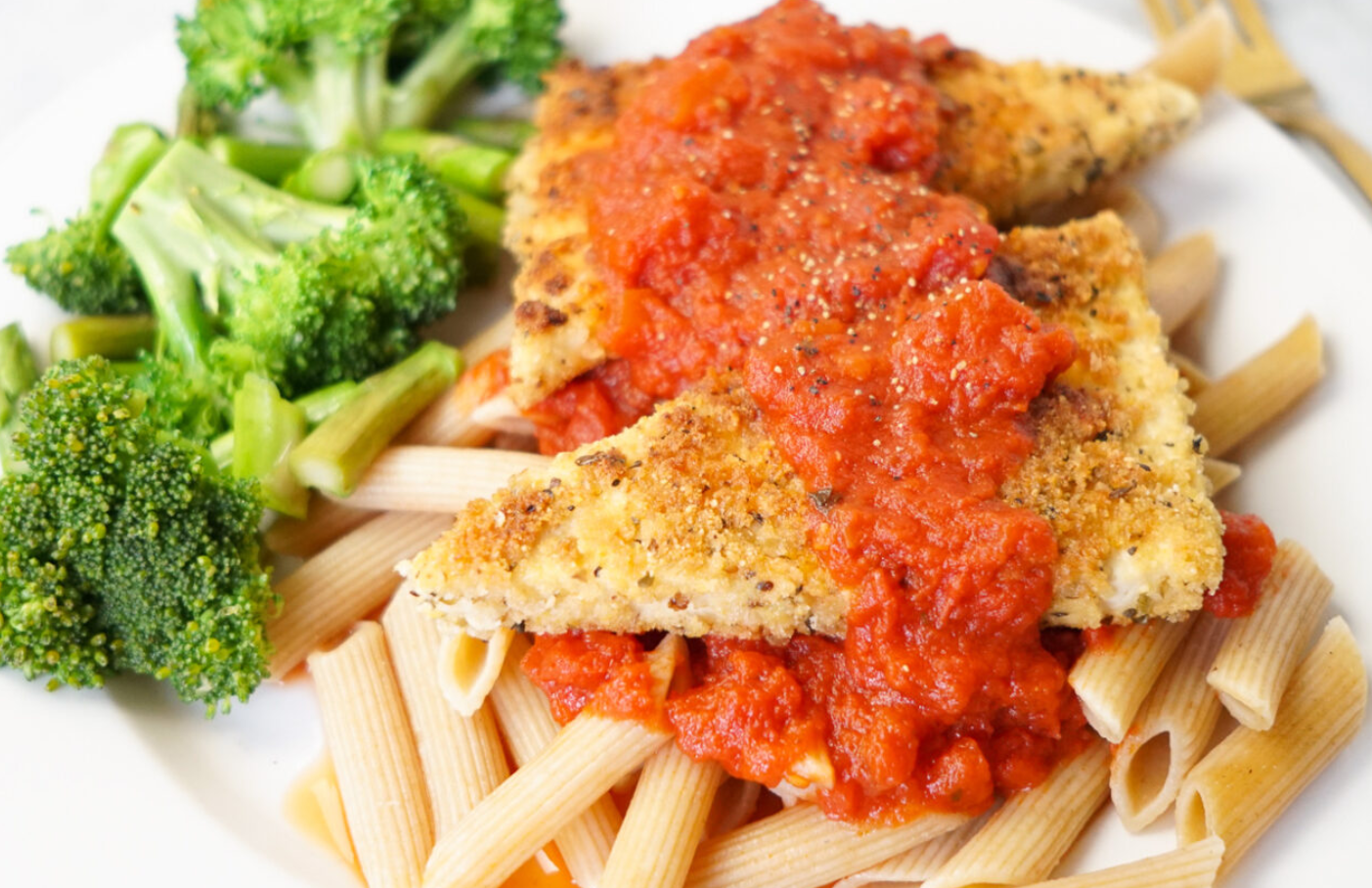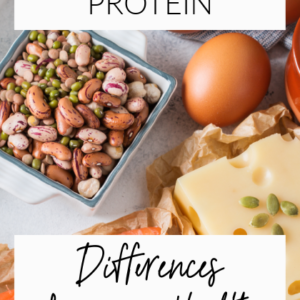Animal vs. plant protein. What’s the distinction between protein sources by way of well being outcomes? Right here’s what analysis says concerning the professionals and cons of protein varieties, plus I’m sharing a couple of concepts for utilizing plant protein.

Protein (and just about each different nutrient) is broadly debated by way of how a lot you want, whether or not it’s “good” or “unhealthy” for you, and the place to get it in your food regimen. Many individuals wonder if it actually issues when you get protein from animal or plant sources.
And it seems that it does matter. In truth, research present that the first kind of protein you eat could also be related to higher or worse illness outcomes, in addition to your total danger of loss of life.
How A lot Protein Do You Want?
Whereas right here in the USA we proceed to be fairly centered on protein consumption, most of us get extra protein than we actually want. (The actual nutrient of concern right here is fiber, however that’s a put up for an additional time.)
True protein deficiency could be very uncommon in western international locations, significantly when you’re getting sufficient total energy from quite a lot of wholesome meals sources.
So how a lot protein do you really need? The really useful each day protein consumption for the typical particular person is round 0.8 grams per kilogram of physique weight. For a 140-pound (64-kg) lady, for instance, this might translate to roughly 51 grams of protein per day.
And when you eat a plant-based food regimen? It’s a typical false impression that predominantly, or completely, plant-based diets are low in protein. However the reality is that there’s no scarcity of protein right here since you’ll discover some in actually each entire meals.
Let’s first have a look at the variations between the 2 essential classes of protein: animal and plant.
Variations Between Animal and Plant Protein
Protein is extra typically related to animal meals, like meat, rooster, fish, eggs, and dairy merchandise. However there are a lot of glorious plant sources of protein too, comparable to beans, peas, lentils, tofu, nuts, seeds, and grains… even vegatables and fruits have some!
The largest chemical distinction between animal and plant proteins is of their amino acid profiles.
There was once a rampant fable about plant proteins being “incomplete”. The thought was that you simply needed to mix complementary proteins on the similar meal, comparable to beans and rice, with a view to present your physique with all of the important amino acids it wanted.
This has since been debunked as a result of it seems that your physique is smarter than these deceptive headlines counsel (shocker!).
The reality is that your physique is designed to take amino acids from all of the meals in your food regimen and put them collectively like puzzle items to create the protein you want.
Plant proteins nonetheless include all 9 of the important amino acids, however they do are likely to have restricted quantities of two: lysine and methionine.
Does that imply they’re not nearly as good for you? No! It simply implies that you shouldn’t be counting on one single meals as your essential supply of protein. Moderately, incorporate many sources of plant-based protein into your food regimen together with these which might be excessive in lysine and methionine.
Good sources of lysine embrace soy, quinoa, pistachios, beans and legumes, and pumpkin seeds. Methionine will be present in sunflower seeds, Brazil nuts, and oats.

Which Protein Kind is Greatest?
There are research which have proven that our western obsession with protein may very well be hazardous to our well being. That’s proper – extra isn’t all the time higher in the case of protein.
On the subject of animal or plant protein sources, proof signifies it’s greatest to get most (if not all) of your protein from plant-based meals. In truth, analysis reveals that top animal protein consumption can enhance your danger for early loss of life from issues like coronary heart illness, kind 2 diabetes, and most cancers.
What’s extra, the priority about getting an excessive amount of protein total seems to be negated when your food regimen is primarily made up of plant-based protein.
A 2014 research discovered that total, a high-protein food regimen (a minimum of 20% of energy from protein) got here with a 74% larger probability of loss of life from any trigger inside the 20-year research interval than a low-protein food regimen (fewer than 10% of energy from protein). Plus, the authors discovered that detrimental well being associations of a high-protein food regimen have been lowered or eradicated if the protein got here from plant meals.
This has been additional confirmed by different research.
In a 2016 research printed in JAMA Inner Drugs, researchers examined protein consumption, and sources, amongst 85,013 girls and 46,329 males from the Nurses’ Well being Research and Well being Professionals Comply with-up Research. They discovered {that a} larger consumption of animal protein was related to a better danger of all-cause and cause-specific loss of life, whereas plant protein had the other relationship. The authors really useful substituting plant protein rather than animal protein, particularly processed pink meat, for higher total well being outcomes.
And a 2019 medical trial printed within the American Journal of Scientific Vitamin concurred. Taking a look at protein consumption information from 2641 Finnish males, the researchers discovered that larger total protein consumption was related to mortality amongst individuals with current illnesses. In addition they discovered {that a} larger ratio of animal to plant protein, in addition to larger meat consumption, have been related to an elevated danger of loss of life.
Consuming predominantly plant protein is best by way of particular illnesses, too.
Coronary heart well being: A 2018 research within the Worldwide Journal of Epidemiology, together with food regimen information from over 81,000 adults within the Adventist Well being Research-2, discovered that protein primarily from vegetation is best for cardiovascular well being outcomes than protein from animal sources. The largest variations have been seen between meat-based protein and protein from nut and seed sources, the latter having a major protecting impact on coronary heart well being.
Kind 2 diabetes: A 2017 research amongst 2,332 males discovered that consuming a food regimen primarily of plant and egg protein, and minimizing animal-derived protein, ends in much less danger for growing kind 2 diabetes. In truth, changing simply 1% of energy from animal protein with plant protein resulted in an 18% decrease danger of kind 2 diabetes amongst research contributors.

The way to Use Plant Proteins
Should you’re new to plant-based consuming, relaxation assured that there are many methods to get sufficient protein with out a lot effort.
Listed here are a number of the greatest plant sources of protein and the way a lot you’ll discover in them:
- Tofu, 1/2 cup serving: 10 grams
- Tempeh, 1/2 cup serving: 15 grams
- Black beans, ½ cup canned: 7.5 grams
- Chickpeas, ½ cup canned: 7 grams
- Inexperienced peas, ½ cup cooked: 4 grams
- Lentils, ½ cup cooked: 8 grams
- Peanut butter, 2 tablespoons: 8 grams
- Flax seeds, ¼ cup: 7 grams
- Seitan, 3 oz serving: 20 grams
- Quinoa, ½ cup cooked: 2 grams
- Broccoli, 1 cup cooked: 5 grams
Tofu, tempeh, and seitan work nice in stir fry dishes, sliced and utilized in sandwiches, or sautéed right into a breakfast scramble or taco filling. Beans will be thrown into any soup or salad, used to make bean dip or hummus, included in home made veggie burger patties and enchiladas, or marinated as a facet dish. Heck, I even use them in brownies and smoothies..
I like including nuts and seeds to smoothies, oatmeal, yogurt, and pudding, or made right into a crunchy path combine. Quinoa and different grains can be utilized as a base for roasted veggies, made into a chilly grain salad with dressing, and even cooked right into a breakfast bowl. And naturally, veggies will be eaten uncooked or cooked, added to only about any meal or snack.
Animal vs. plant protein? The decision is in and it’s one other win for a predominantly plant-based food regimen. Get most, or all, of your protein from plant sources and reap the advantages of a decrease danger for varied illnesses – and possibly even an extended life!
Weigh-in: What are a few of your favourite methods to get pleasure from plant-based protein sources?
Dive additional into the science on protein with these articles:
– Whitney

